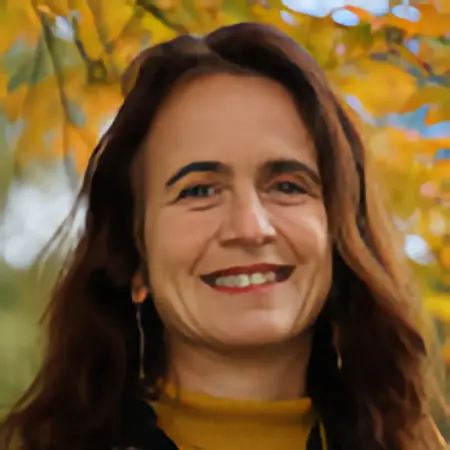Check out biology24.ch for more information. Thank you so much for coming!
Coffee breaks
Lunch

Check out biology24.ch for more information. Thank you so much for coming!
February 16-17, 2023 at the University of Geneva
Biology 23 is the largest conference of organismic biology in Switzerland and aims to provide a platform for exchange between students, researchers and professors across scientific institutions, research groups and topic areas.
Biology 23 is also the annual joint meeting of the Swiss Zoological, Botanical, and Systematics societies.
Registration, first conference day and Darwin event.
Second conference day and best talk and best poster awards.
The video recordings will remain available until the end of March.
Marianna Tzivanopoulou, University of Lausanne, was awarded the Microsynth-sponsored best talk price for her presentation entitled “Assessing the reliability of citizen-science data for the study of ant species’ environmental niches and distributions“.
Dave Lutgen, University of Bern, Swiss Ornithological Institute, and Friedrich-Schiller-University, was awarded the Fasteris-Genesupport-sponsored best poster price for his poster entitled “Modular regulation and convergent evolution of ASIP underpins color variation in wheatears“.
Meet the stars of the event.
Discover the full programme, including all the abstracts of the session talks!
Please bring your email receipt, and allow enough time for poster setup.
105min
A300
10:15
By Alice Cibois, Yamama Naciri, and Estella Poloni.
15min
A300

Chair: Yamama Naciri
45min
A300
My research revolves around the following fundamental questions in evolutionary biology: How is biological diversity partitioned at different temporal, spatial, and genomic scales? What are the processes that generate and eliminate biological diversity? How do geography, ecology, and genomes shape the evolution of biological diversity? I strive to address the complexity of these questions by […]
website11:15
45min
A300, A150 and A100
12:00
Chair: whichever one you choose 😉
75min
Sc II Cafeteria

Chair: Estella Poloni
45min
A300
I am interested in the development of computational methods to understand evolutionary processes at the population and species level, for instance to study how past climatic and environmental changes have influenced the pattern of genetic diversity of a given species, or to detect evidence of local adaptations from genomic information. Photo ©Universität Bern; Foto: Adrian […]
website14:30
45min
A300, A150 and A100
16:00
45min
A300, A150 and A100
18:00
The event will take place at the Le Bateau Genève (How to get there)

until late
Le Bateau Genève

Chair: Alice Cibois
45
Le Bateau Genève
I am an evolutionary ecologist interested in the processes that promote divergence in wild vertebrate systems. To understand the processes of genetic, morphological and ecological/behavioural differentiation, I combine field and molecular ecology approaches in my research. I currently lead a long-term field project on natural selection, demography and behaviour in a bird population of silvereye […]
website08:00
60min
A300
09:00
By Alice Cibois, Yamama Naciri, and Estella Poloni.
15min
A300

Chair: Claudio Quilodran
45min
A300
My group and I research how demographic rates vary across genotypes, phenotypes and environments. We identify the ecological, evolutionary and conservation consequences of this variation. We use a mix of field observations, laboratory experiments, statistical analysis of data and the construction and analysis of mathematical models.
website30min
A300
11:00
45min
A300, A150 and A100
11:45
Chair: whichever one you choose 😉
75min
Sc II Cafeteria

Chair: Mathieu Perret
45min
A300
I study how the spatial and temporal arrangement of habitats influences biological diversity. This issue relates to a number of fundamental questions in ecology that have challenged scientists for decades. Questions include: Why do mountains have extraordinary biodiversity? What is the importance of niche partitioning in maintaining biological diversity? and How does the climate history […]
website13:45
45min
A300, A150 and A100
15:15
45min
A300, A150 and A100
The 3 societies will nominate and award the best talk.
All attendees will be invited to vote for the best poster, which will be awarded by Alicia Sanchez-Mazas.
15min
A300
16:15
By Alice Cibois, Yamama Naciri, and Estella Poloni.
15min
A300
18 Feb 2023 > Day 1+2 plenary sessions recordings are available! 🎥
(*) The recordings will remain available until March 31th, 2023.
The duration of each talk is 15 minutes (12 minutes presentation + 3 minutes for questions). More information will be provided once the talk selection process completed.
Each poster must have a portrait layout and be in the format (width x height) 841 mm x 1189 mm corresponding to A0. More information will be provided on the flash talks once the poster selection process completed.
Science II houses the physics, chemistry, earth sciences and biology sections of the Faculty of Science of the University of Geneva.

University of Geneva – Sciences II
Quai Ernest Ansermet 30, 1205 Genève
1 mi / 1.6 km from Downtown
2
DAYS
59
TALKS
260
ATTENDEES
1
PARTY
Members of the Swiss Systematics Society, Swiss Botanical Society and Swiss Zoological Society receive 10 CHF discount. Discount is not cumulative.
Regular price (in CHF) – 2 days
60.-
Coffee breaks
Lunch
50.-
Coffee breaks
Lunch
Student price (in CHF) – 2 days
BSc, MSc or PhD only
50.-
Coffee breaks
Lunch
40.-
Coffee breaks
Lunch
The Darwin Event will take place at Le Bateau Genève in Geneva. The event includes the keynote conference by Sonya Clegg, the dinner and a musical event.
More info at www.bateaugeneve.ch
+80.-
Apéro, three-course meal, and a selection of soft and alcoholic beverages
Musical event
+70.-
Apéro, three-course meal, and a selection of soft and alcoholic beverages
Musical event
(*) but we will be accepting a limited number of in-person registrations (cash only) on the first day of the event.
Relive the event in photos.
Meet the brains behind the event.
Isabel Blasco-Costa
Muséum d’histoire naturelle de Genève et Université de Genève
museumlab-geneve.ch/auteurs/isabel-blasco-costa
Lionel Cavin
Muséum d’histoire naturelle de Genève
museumlab-geneve.ch/auteurs/lionel-cavin
Camille Christe
Conservatoire et Jardin Botaniques de Genève
www.researchgate.net/profile/camille-christe
Alice Cibois
Muséum d’histoire naturelle de Genève
museumlab-geneve.ch/auteurs/alice-cibois
Mathias Currat
Université de Genève
genev.unige.ch/research/laboratory/mathias-currat
Lionel Di Santo
Université de Genève
https://sites.google.com/view/lioneldisanto/
Pascale Gerbault
Université de Genève
genev.unige.ch/research/people/pascale-gerbault
Yamama Naciri
Conservatoire et Jardin Botaniques de Genève et Université de Genève
www.researchgate.net/profile/yamama-naciri
Mathieu Perret
Conservatoire et Jardin Botaniques de Genève et Université de Genève
www.researchgate.net/profile/mathieu-perret-2
Estella Poloni
Université de Genève
genev.unige.ch/research/laboratory/estella-poloni
Charles Pouchon
Conservatoire et Jardin Botaniques de Genève
www.researchgate.net/profile/charles-pouchon
Michelle Price
Conservatoire et Jardin Botaniques de Genève et Université de Genève
biveg.unige.ch/labs/price
Claudio Quilodran
Université de Genève
genev.unige.ch/research/people/claudio-quilodran
Alicia Sanchez-Mazas
Université de Genève
genev.unige.ch/research/laboratory/alicia-sanchez-mazas
Arthur Sanguet
Université de Genève
David Roessli (website)
Université de Genève
genev.unige.ch/research/people/david-roessli
Slim Chraïti (poster and photos)
Université de Genève
genev.unige.ch/research/people/slim-chraiti
Caroline Stemberger Duri (logistics)
Université de Genève
genev.unige.ch/research/people/caroline-stemberger
Stephan Weber (logistics)
Université de Genève
genev.unige.ch/research/people/stephan-weber
Jesus Gonzalez (audio-visuels)
Université de Genève
G.R.E.S. Unidos de Genève (entertainement)
School of percussion and samba dance
unidosdegeneve.com
Chaleur cosmique (entertainement)
Nathan, DJ
www.facebook.com/chaleurcosmique
A BIG thank you to all our sponsors for supporting this event!